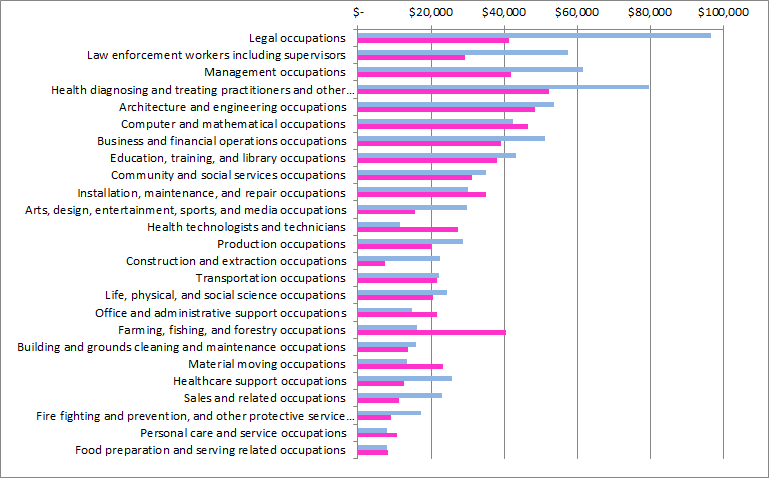[This is not a post about football – BGP]
The End of Men is a book about the rise of women and the relative decline of men in the new economy, and while I’ve generally enjoyed reading the book, I’ve found that whenever the author makes the sort of claims that can be readily fact-checked using statistics, the facts don’t tend to fall in favor of the book’s central hypothesis. Here is one outstanding example which relies on the idea that there is something special about the Auburn-Opelika Metropolitan Statistical Area in Alabama:
Ok, these are some fairly extravagant claims. If indeed Auburn is a “feminist paradise” then surely we’d expect that the women are generally earning on par with the men, right? What happens when we look at the relevant census data? (To pull the source data for yourself, use S2401 for the table name and enter Auburn-Opelika in the place name.)

It would appear that women are not significantly outearning men in most fields, and what is more, men are dominant in eight out of the top ten most remunerative (and presumably most prestigous) fields. Interestingly, women are very slightly outearning men in my own field, computer and mathematical, even though (or perhaps because) they comprise only one in four of those employed therein.
How does Ms. Rosin get this so badly wrong? She had a narrative about women rising up, and she went looking for some data-based confirmation of that narrative rather than trying to fashion an empirical test which might possibly disconfirm her hypotheses. She focused narrowly on the data from one questionable study. Finally, she failed to bear in mind that constructing “broad conclusions based on weird data slices is bad practice.”
For a thoroughgoing debunking of the mythologization of Auburn as a matriarchal utopia, by an actual sociologist, please check out Philip N. Cohen’s blog. Share and enjoy!

